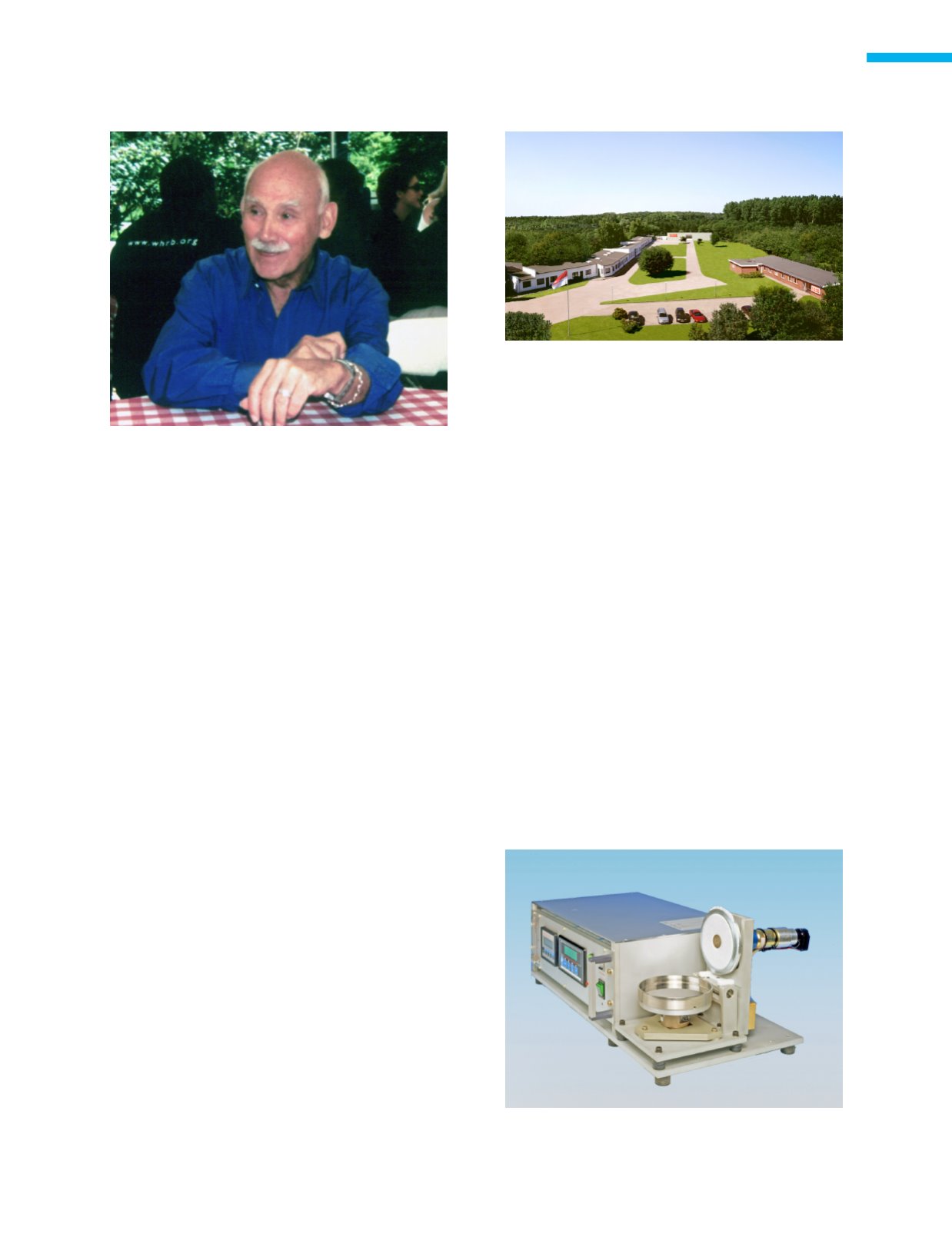
In 1986, Labuda‘s life entered a new phase.
With the start of research activities intowiping
mediums, the need arose to document the
knowledge gained and tomake it available to
the public bymeans of technical papers. It
was the young physicist Lodevicus Hermans
being in charge of the cleanrooms in the
Siemens Regensburg facilitywho urged Labu-
da to do some research in the field of surface
cleanliness and cleanroom-consumables.
Labudamet this challenge and began to pu-
blish his findings in papers, first with the VDI
Verlag and later in the periodical
Reinraum-
Technik
, published by theWiley GIT Verlag.
From 1985 to 2016, 40 papers dealingwith
various aspects of cleaning technologywere
written in the Clear & Clean Research Labo-
ratory;most of these authored by Labuda
himself (see pages 10-11). Many of them are
available on the Internet both in English and
inGerman.
In the same year (1986) the Siemens Corpo-
ration decided to exclusively use disposable
cleanroommaterials likewipers, gloves and
paper by Clear & Clean for its new semicon-
ductor factory in Regensburg. Thus, the long-
term financing of Clear & Clean‘s researchwas
secured. During this period VDI, the Associati-
on of German Engineers, founded a guidelines
committee, which aimed to develop recom-
mended practice guidelines for cleanroom
technology. Labudawas invited to collaborate
on this project and did so until 1996.
More andmore German customers convinced
themselves of the quality and usability of Clear
& Clean‘s products; as timewent by,
Robert Bosch, IBM Sindelfingen, Infineon,
Leitz, Micronas, Texas Instruments, X-FAB and
Zeiss could bewon as faithful customers in
addition to Siemens. In 1990, Labuda bought
the 3,2 acre factory premises located on Niels-
Bohr-Ring in Lübeck (7). He systematically
increased the production capacity at this site;
today, more than onemillion cleaningwipers
can be produced there on a 3-shift-basis.
Until this day, there is no German industry
standard (DIN) for precision cleaningwipers,
nor are there any generally acknowledged
German testingmethods. Therefore,
Labuda first had to go about the laborious task
of developingmethods and devices for testing
cleaningwipers in order to reproduciblymea-
sure and document their performance, quality
and usability for the Clear & Clean-production.
BIOGRAPHY
ReinRaumTechnik
3/2008
//
3
Fig. 7
The Clear & Clean plant for cleanroom-
consumables, located on a 3,2 acre site in Lübeck
Fig. 6
Edward Paley, founder of Texwipe Inc. in
2005
Fig. 8
The Labuda RotationWiping Simulator Mark II


